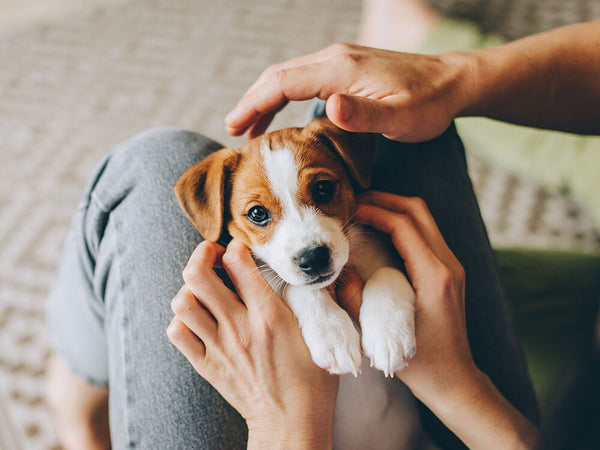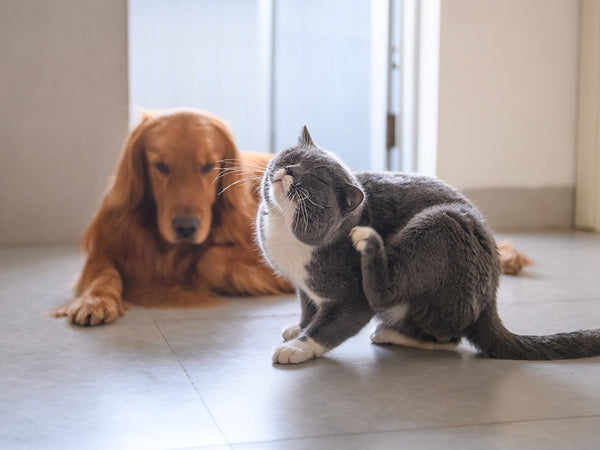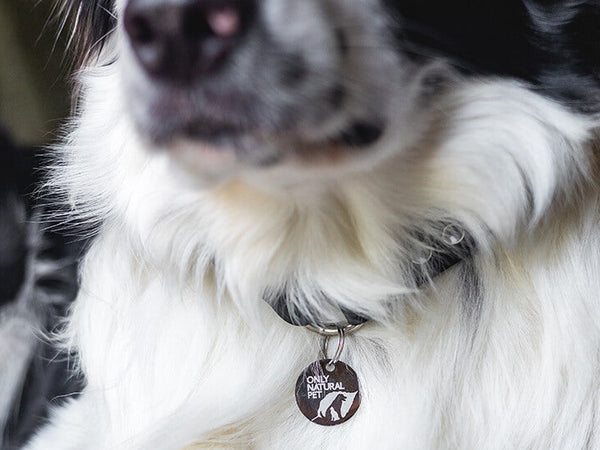7 Tips for Walking Your Dog Safely at Night
Written by: Richard Rowland
When Daylight Saving Time ends, and the sun sets earlier – before 5 PM in many places – taking your dog for a walk gets more challenging. Your pup still needs their daily exercise but walking at night comes with a few safety risks.
Darkness minimizes your visibility to other pedestrians and drivers, and it also makes it more difficult for you to see where you're going. This puts you at risk of injury from sidewalk hazards, car accidents, and even potholes.
When it's dark, you're also at greater risk of running into dangerous wildlife in the dark, like coyotes or mountain lions, putting you and your dog in danger. To keep up with your dog's exercise routine as the days get shorter, read on to learn 7 tips for walking your dog safely at night.
1) Stay Visible with Light-Up and Reflective Clothing
The biggest problem with dog walking at night is a lack of visibility. LED collars or leashes are a great way to make your dog more visible to cars, and they also help light your way during your walk. Reflective vests, reflective Arcadia Trail collars, and leashes are also a great option to help make your dog easier to see.
To keep yourself visible, avoid wearing all-black outfits or dark colored clothing. Instead, choose bright colors and reflective clothing, if possible. Reflective vests and shoes are great ways to make yourself more visible to traffic and other pedestrians.
2) Stick to Familiar Paths
While exploring new walking routes with your dog can be fun, trying new paths is best as a daytime activity. At night, stick with familiar, preferably well-lit paths that are easy for you to navigate in the dark.
Avoid walking through isolated areas or dark alleyways and keep your dog on the sidewalks whenever possible.
Not only can familiar paths help keep you and your pup from getting lost, but it also helps you avoid potentially dangerous wildlife. In the event of an emergency, being on a familiar path also makes it easier to alert authorities of your location.
3) Keep Your Dog Leashed at All Times
Keeping your dog on an Arcadia Trail leash during your walks is always important, but it's especially crucial at night. A leash provides you more control over your dog, and control is important in the dark where you need to be aware of your surroundings.
Even a well-trained dog can be unpredictable at times. You never know when they'll try to chase a squirrel or try to run from something they're afraid of. With a leash, you can keep them close to you, redirecting them from danger and preventing them from wandering off into the darkness.
In addition, a leash helps you keep your dog away from the road and out of the way of oncoming cars. A reflective leash also doubles as a great safety device for dog walking at night.
4) Leave Your Headphones at Home
When you're walking at night, you need to stay alert. While bringing your headphones to listen to music or your favorite podcast is tempting, headphones distract you from potential danger around you.
Leave your headphones at home for your nightly walks with your dog. Without them, you can listen for oncoming traffic, joggers, or wildlife near you.
Without distractions, you can also pay closer attention to your dog and their body language. In the dark, it can be hard for humans to see potential hazards, but dogs can often sense the danger nearby.
Keep a close eye on your dog's body language and listen for sounds of distress, so you can react accordingly.
5) Stay Alert to Your Surroundings
Leaving your headphones at home isn't the only way to stay distraction-free. Make sure you're also checking your surroundings regularly and obeying all traffic laws.
Cars are one of the biggest dangers you face at night because oncoming traffic can't always see you. Because of their bright headlights, you can typically see them coming first, and you can avoid potential injuries by staying out of their way.
To make it easier to see oncoming cars, always walk against traffic and look both ways before crossing the street.
Wildlife encounters are also a potential danger, especially if you live in a wooded area or near natural habits of wild animals. Keep a diligent eye out for signs of wildlife on your walk, such as tracks, and carry appropriate protection, like bear spray, with you at all times.
6) Keep Your Cell Phone Charged
In the modern age of technology, cell phones serve as a great safety precaution.
Not only do they provide a way for you to call authorities in case of an emergency, but they also come equipped with several features that are helpful for nighttime walks. You can use your phone as a flashlight, if needed, and they also can serve as a map if you were to get lost.
Always make sure your phone is charged before you leave the house for your nighttime walk, and carry a portable charger with you, just in case.
Keep your phone on you at all times, but keep it put away until you need it for emergencies. This helps preserve your battery life, but it also prevents you from being distracted on your walk.
7) Walk with a Friend (besides your dog!), If Possible
If you don't feel comfortable walking at night alone, ask a friend, family member, or neighbor to walk with you. Having another person with you provides an extra set of eyes and ears to help you stay alert to your surroundings, and they can also be helpful in case of an emergency.
Walking with a friend also makes your walks more fun and helps keep you motivated to stick to your dog's exercise routine. Consistent exercise helps build healthy habits for both you and your pup.
Should You Be Worried About Walking Your Dog at Night?
Walks are an important part of your dog's exercise routine, even in the dark, cold months of winter. While walking your dog at night does come with added safety risks, with a few precautions, your nighttime walks can be just as safe and fun as those during the day.





















